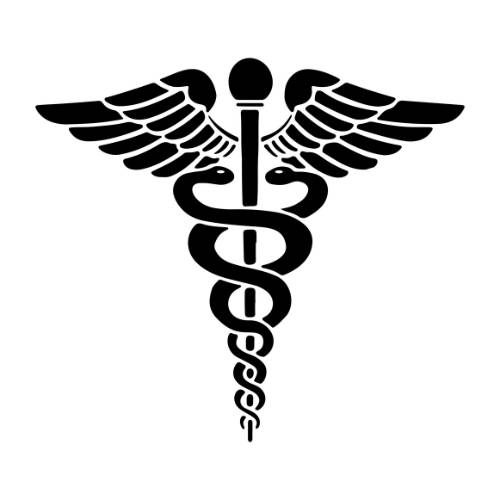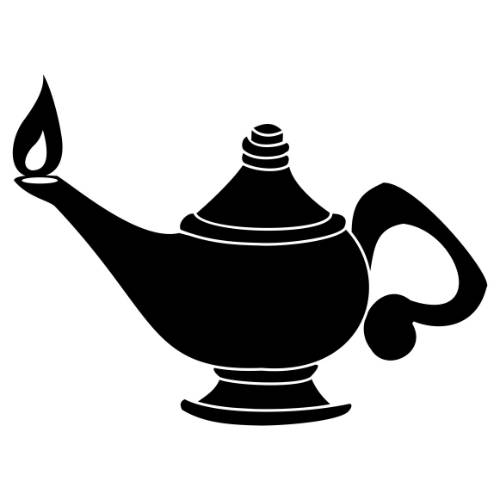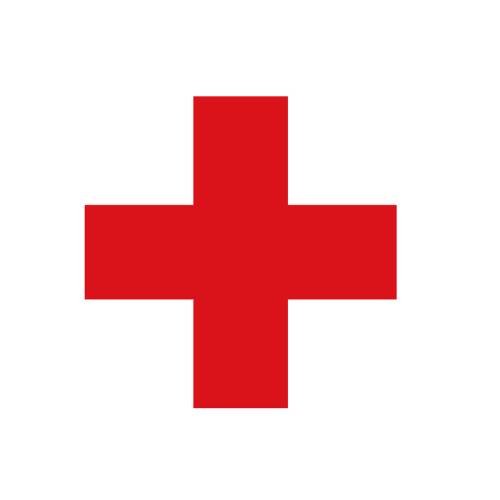What Does the Nurse Symbol Mean? FAQ and Overview of Common Medical Symbols

Have you seen a symbol of a rod with two snakes wrapped around it? You might not know its history, but you probably associate it with medicine. It’s the logo for many clinics, it decorates diplomas, and it’s even a common bumper sticker. This medical symbol is called the caduceus symbol, and it has come to represent medicine at large.
The caduceus is sometimes called a nurse symbol. Nurses commonly wear the caduceus as a badge pin, but they’re not the only group that uses it. And while you’ve probably seen this emblem before, you may not know its history or significance.
Another common symbol in nursing is the lamp of learning. But the lamp and the caduceus symbol aren’t the only medical or nursing symbols. Let’s dig into where the caduceus, the lamp, and other common medical symbols come from and what they mean today.
The Caduceus Nurse Symbol

While it’s associated with medicine today, the caduceus has origins as twisting as the snakes it contains. In ancient Roman and Greek mythology, the caduceus symbolized Mercury — god of merchants, thieves, and outlaws — who tried to stop a fight between two snakes by throwing a staff between them. From this story, the caduceus was born. In the healthcare context, the caduceus represents the role of nurses as communicators, mediators, and facilitators of healing and care.
The caduceus emblem includes two serpents winding their way up a staff. In some versions, they have wings. A similar symbol, the Staff of Asclepius, has only one snake. While the caduceus is more recognizable and common, scholars prefer the Staff of Asclepius symbol, and we’ll explain why below.
Where you can find the caduceus:
- The U.S. Army Medical Corps (USAMC) logo
- The U.S. Public Health Service Corps logo
The Lamp of Learning Nurse Symbol

The caduceus is a symbol for medicine, but the lesser-known Lamp of Learning is a true nursing emblem. It holds a special place in the world of nursing, thanks in large part to the pioneering work of Florence Nightingale, often regarded as the founder of modern nursing.
Florence Nightingale earned her enduring nickname, The Lady with the Lamp, during her service as a nurse during the Crimean War in the mid-19th century. She was known for making nightly rounds among wounded soldiers, carrying a lamp to light her way. While the lamp refers to her compassionate direct patient care, her greatest innovations were in system-level changes and evidence-based practice.
Nightingale was an advocate for cleanliness in facilities. A trained statistician, she was the first to show that most hospital deaths were resulting from infection, not from battle injuries. Ventilation, shelter, and nutrition were other core issues she championed, and she remains a symbol for quality nursing and advocacy.
Today, this simple olive oil lamp is used in pinning ceremonies, in oaths for graduating nurses, and as a pin on faculty members’ robes. These ceremonies have roots in nursing history, and they’re a way to mark passage through nursing school and into the profession.
Where you might see the Lamp of Learning:
- Nursing school pinning ceremonies
- Some hospital logos use it
3 Other Common Medical Symbols and Their Interpretations
1. The Staff of Asclepius

Instead of two snakes around a staff, this symbol uses only one. Asclepius (also spelled Aesculapius) is the Greek god of medicine and healing, and he’s depicted holding a rough staff with a single serpent entwined around it. Many medical scholars prefer the Staff of Asclepius to the caduceus, because it’s a healing symbol. For patients, there’s little to distinguish one from the other.
This snake in the emblem comes from a biblical story in which Moses used a bronze serpent on a staff to cure snake bites. There are other possible meanings as well; snakes shed their skin, symbolizing rebirth and longevity. Snakes can move quickly after being lethargic, which could symbolize recovery from illness. And in the 1600s, snake venom was researched as a remedy for several illnesses, although this could also be where the term “snake oil” originates.
Although the differences between the Staff of Asclepius and the caduceus symbol might seem small, many medical scholars strongly prefer the staff. One scholar writes, “The Staff of Aesculapius is the only true symbol of medicine.” Next time you notice either healthcare symbol, take note of whether you see one or two snakes to know which one it is.
Where you can find the Staff of Asclepius:
- The World Health Organization sign
- Many hospital and clinic logos
2. The Red Cross

The red cross is an iconic, universally recognized health symbol that represents humanitarianism, aid, and compassion in times of crisis. It holds a prominent place in disaster relief, healthcare, and humanitarian work. The most simple of the medical symbols, it represents the International Committee of the Red Cross (ICRC), an aid and relief organization that’s more than 150 years old.
The red cross is traced back to Swiss humanitarian Henry Dunant. In 1863, Dunant saw the suffering of wounded soldiers on the battlefield in Italy, and founded the ICRC as a volunteer relief organization. He proposed that the symbol of the red cross on a white background would represent neutrality and protection for medical personnel during conflict.
Where you can find the red cross:
- The ICRC logo
- The Medical Corps of the Armed Forces
3. The Nurse Cap and Uniform

The nurse symbol of a cap and uniform comes from early standards of dress for nursing. And while these symbols might be seen as old-fashioned today, their roots are even older.
Nursing caps originated before the 1800s, when nuns cared for the sick. Some nurses even wore veils during this time. In the 19th century, these head coverings were streamlined into white caps, and Florence Nightingale was said to have worn one. This practice was continued by some of the earliest nursing schools, like the Sisters of Charity of St. Vincent de Paul in Paris, who wore caps with their uniforms.
By the 1980s, few schools were using them, and even less hospital uniforms required caps. The nurse cap and uniform are less common in professional settings today because they don’t accurately represent the nursing profession. As more men have entered the field, white-skirted uniforms don’t represent the diversity in nursing. Not to mention, they’re impractical.
This nursing symbol still holds a certain nostalgia for more experienced nurses who remember when these uniforms were the norm. Nursing has changed dramatically in the last several decades. Even though you don’t wear a cap and uniform (and you’re probably thankful for that), you know what they represent for nursing history.
Where you can find the nurse cap and uniform:
- Nursing historical museums
Frequently Asked Questions About Medical Symbols
What is the nurse symbol?
The caduceus symbol and the Lamp of Learning are common nursing symbols. The caduceus comes from an ancient Greek myth, and the lamp comes from Florence Nightingale, who some call the mother of modern nursing practice.
What is the meaning of the snake on the medical logo?
The snake on the Staff of Asclepius comes from a biblical story of Moses. He fixed a bronze snake to a staff and used it to cure people of snake bites.
What is the nursing lamp called?
The nursing lamp is called the Lamp of Learning, and its roots come from Florence Nightingale. She was known as The Lady with the Lamp, and is known as the founder of modern nursing practice. The symbol is commonly used in pinning ceremonies at nursing schools.
What color represents nursing?
Nursing doesn’t have a specific color, although white has been used in the past to symbolize cleanliness. Nursing uniforms from the 19th and 20th centuries tended to be white, but this is less common today. The colors of nursing scrubs depend on the hospital and specialty, but blues and blacks are common.
Find Quality on IntelyCare
Each nurse symbol helps us make greater meaning of the profession, and they’ve evolved as nursing has changed. Beyond the imagery, these symbols remind nurses of the values at the core of the profession: compassion, knowledge, care, and dedication. At IntelyCare, we see your hard work. Find an employer that values it as well. We’ve got your next great nursing job right now on IntelyCare.
